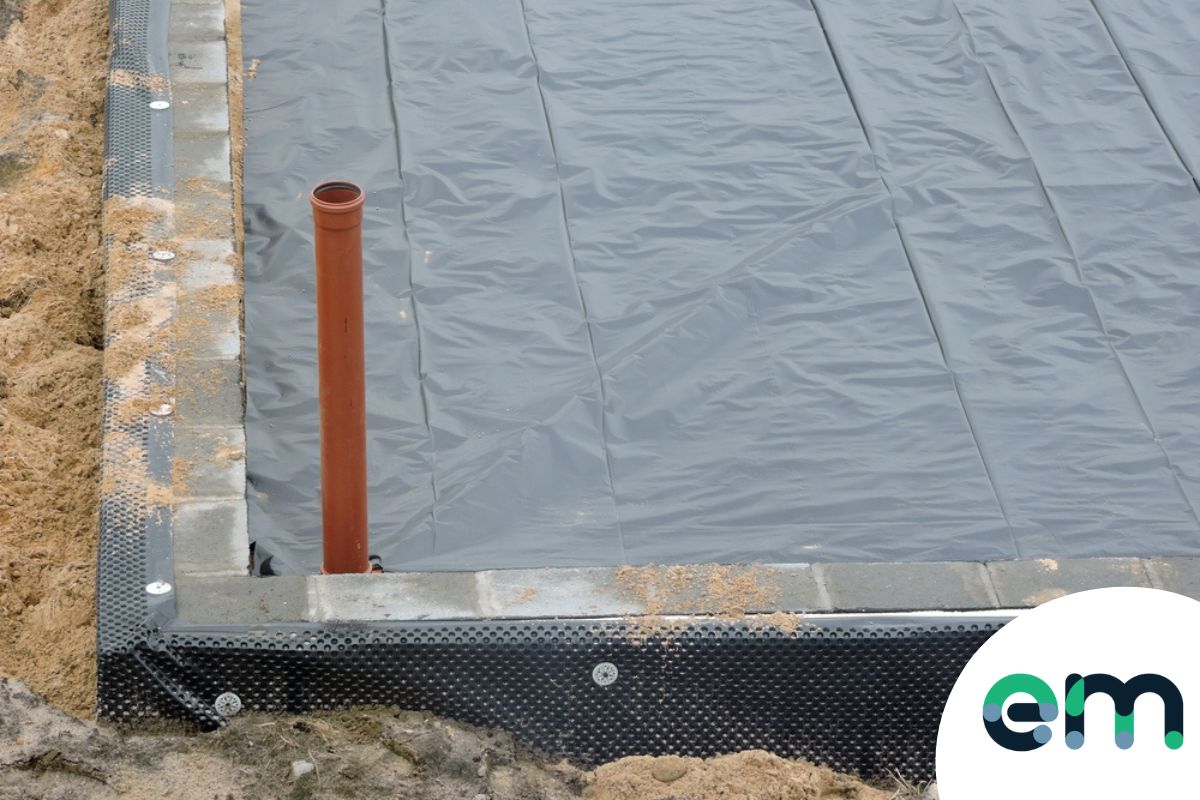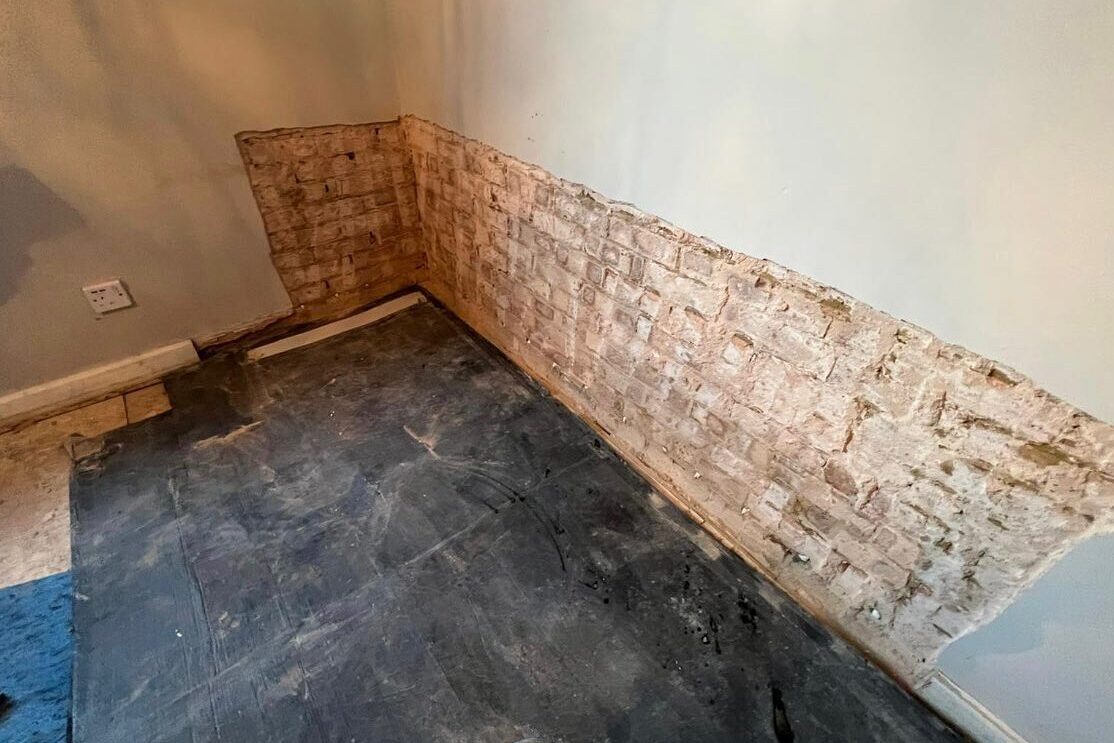How come damp removal newcastle is your primary solution against household mold
Exploring the Various Strategies and Solutions for Effective Damp Proofing
Moisture in buildings positions substantial difficulties to both structural integrity and indoor air high quality. Various methods and remedies have emerged to battle this prevalent concern. From conventional damp-proof membranes to cutting-edge chemical treatments, each approach provides special advantages. Comprehending these alternatives is crucial for reliable dampness control. Choosing the ideal option depends on specific building conditions and requirements, motivating more exploration right into the most reliable moist proofing methods available.
Recognizing the Sources Of Dampness
Dampness can develop from numerous resources, recognizing these causes is vital for efficient remediation. Generally, moisture stems from three main sources: increasing wet, permeating moist, and condensation. Rising wet takes place when groundwater takes a trip up-wards with permeable products, such as brick or stone, frequently because of a lack of an efficient barrier (mould treatment newcastle). Passing through damp is typically brought on by external factors, including roof leakages, faulty gutters, or harmed wall surfaces, permitting water to penetrate a residential or commercial property. Condensation, on the various other hand, arises from excess dampness in the air, often worsened by poor ventilation and temperature distinctions, bring about water droplets basing on surface areas. Determining these underlying issues is crucial, as each kind of moisture needs a tailored method for removal. Appropriate assessment aids in figuring out one of the most reliable remedies, eventually securing the structural integrity of a structure and improving indoor air quality
Standard Damp-Proof Membranes

Chemical Damp-Proofing Solutions
Chemical damp-proofing options offer a cutting-edge strategy to stop wetness intrusion in structures. These approaches usually include the application of fluid chemicals that permeate stonework and form an obstacle against increasing wet. Typically utilized chemicals consist of silanes, siloxanes, and other water-repellent agents that respond with surface materials to develop a hydrophobic layer.The application process usually calls for drilling openings right into the walls, infusing the chemical service, and allowing it to cure. This method is particularly advantageous for older structures where conventional damp-proof membranes may be not practical. Chemical damp-proofing can be less turbulent and much more economical than extensive renovation projects.While reliable, these solutions depend on appropriate application and ecological problems for peak efficiency. mould removal newcastle. Normal upkeep and tracking are necessary to ensure the long life of the damp-proofing treatment. Overall, chemical damp-proofing stands for a functional option for safeguarding buildings against moisture-related damages
Dental Caries Wall Surface Construction Techniques
Cavity wall building and construction methods supply numerous benefits, specifically in dampness control and power effectiveness. By including an air void in between 2 layers of stonework, these wall surfaces successfully mitigate water ingress while enhancing insulation. This mix not just safeguards structures from wetness however also contributes to decreased energy usage.
Benefits of Cavity Walls
When taking into consideration effective damp proofing methods, the benefits of tooth cavity wall surfaces stick out prominently. Tooth cavity wall surfaces include 2 separate layers, developing an air gap that properly decreases moisture infiltration. This design minimizes the threat of dampness, as the outer wall surface acts as an obstacle versus rainfall and water ingress. In addition, cavity walls enhance thermal insulation, which adds to power efficiency by minimizing heat loss. They also supply sound insulation, aiding to produce a quieter interior environment. The air void enables for air flow, which helps in dampness control and lowers the possibility of mold and mildew development. These benefits not just improve the general comfort of a structure but also add to its longevity and architectural honesty.
Moisture Control Techniques
Efficient wetness control methods are critical in tooth cavity wall surface construction to ensure long-lasting defense against wetness. One key method includes the consolidation of weep holes, which facilitate water drain from the cavity, stopping accumulation. Furthermore, using breathable membrane layers can assist handle dampness levels while enabling entraped vapor to leave. Proper positioning of insulation is also critical, as it ought to not block water drainage courses. Ensuring that the external fallen leaves of the dental caries wall are built with waterproof materials improves general durability. Normal upkeep checks are important to identify any kind of blockages or damage early, protecting the structure's stability. Ultimately, a combination of these methods develops a robust defense versus wetness breach in tooth cavity walls.
Insulation and Energy Effectiveness
Insulation plays an important function in improving energy performance within dental caries wall surface construction. By incorporating insulating materials, these wall surfaces develop a thermal barrier that minimizes warmth loss and reduces energy usage. Efficient insulation not only helps keep a steady indoor temperature level yet likewise mitigates the danger of dampness, as it prevents condensation within the wall surface tooth cavity. Numerous strategies, such as making use of inflexible foam boards or mineral woollen, can be used to achieve excellent insulation performance. Furthermore, appropriate setup is necessary to ensure that gaps and voids are minimized, which can or else jeopardize power efficiency. Eventually, a well-insulated cavity wall surface contributes substantially to total sustainability and reduces heating and cooling costs for house owners.
Exterior Damp Proofing Techniques
Exterior damp proofing approaches are necessary for shielding structures from wetness infiltration. 2 efficient methods consist of the application of water-proof membranes and the installation of French drains pipes. These remedies assist reduce water buildup and preserve the stability of buildings.
Waterproof Membrane Application
While numerous website techniques exist for protecting against moisture ingress, the application of waterproof membranes remains a highly reliable exterior moist proofing technique. These membrane layers are normally made from materials such as polyethylene, rubber, or customized asphalt, offering a robust barrier against water infiltration. The installation procedure entails using the membrane to the exterior surface areas of structures or wall surfaces, making certain full insurance coverage to protect against leaks. Appropriate attachment and sealing at joints are essential to making best use of efficiency. Water resistant membranes can be used in various kinds, including fluid coverings and sheet membrane layers, enabling for versatility based upon the specific needs of the framework. This approach not just protects structures from wetness yet likewise improves their long life and architectural stability.
French Drain Installment
One reliable technique for handling groundwater and avoiding dampness build-up around a building's structure is the installment of a French drain. This water drainage system is composed of a trench loaded with crushed rock and a perforated pipeline that reroutes surface area water away from the structure. Proper installation calls for mindful planning, making sure that the drain inclines away from the framework to facilitate perfect water flow. Furthermore, the area of the drain is vital; it ought to be positioned in areas vulnerable to merging or excess dampness. Regular maintenance, including cleaning debris from the crushed rock and making certain the pipe remains unblocked, is essential for long-term efficiency. Eventually, a well-installed French drainpipe can considerably reduce the danger of water-related issues in structures and cellars.
Inside Waterproofing Methods
Inside waterproofing approaches are important for safeguarding a structure's inside from wetness seepage and prospective water damage. These methods usually entail the application of specialized materials and methods made to develop a moisture barrier within the structure. One typical approach is using waterproof finishes or sealers on walls and floorings, which protect against wetness from penetrating surfaces.Additionally, installing indoor drainage systems, such as sump pumps, can effectively manage water accumulation in cellars and crawl spaces. One more method includes using vapor barriers, which are mounted to hinder wetness movement from the ground into living spaces.Moreover, resolving any cracks or spaces in walls or structures with proper sealers guarantees a thorough defense against water breach. By implementing these interior waterproofing approaches, homeowner can substantially lower the risk of mold growth, architectural damage, and various other moisture-related concerns. Appropriate implementation of these techniques is vital for lasting defense and structure integrity.
Regular Upkeep and Evaluation Practices
Normal maintenance and inspection practices are important for ensuring the lasting effectiveness of wet proofing remedies in any structure. Routine checks allow property proprietors to determine early signs of moisture breach, such as peeling paint, mold and mildew development, and musty smells. These indications can indicate underlying issues that call for instant attention.Inspections ought to be conducted a minimum of every year, focusing on vulnerable locations like cellars, creep areas, and outside wall surfaces. During these assessments, homeowner ought to take a look at sealants, water drainage systems, and ventilation to confirm they work correctly.Additionally, maintaining downspouts and rain gutters is important, as clogged systems can lead to water buildup near the structure. Implementing a normal upkeep schedule, together with timely fixings, can substantially prolong the lifespan of moist proofing measures and safeguard the structural honesty of the building. Positive steps inevitably add to the total health and safety of the living atmosphere.
Regularly Asked Questions
How Much Time Does Damp Proofing Generally Last?
The duration of moist proofing efficiency varies, commonly lasting in between 20 to half a century. Variables such as application top quality, environmental problems, and maintenance techniques greatly influence the long life of the damp proofing therapy.

Can I Damp Proof My Home Myself?
The individual pondered the expediency of do it yourself damp proofing. With proper research and the right materials, it is possible. They likewise recognized the significance of expert advice to ensure durable efficiency and stop future concerns.
What Are the Indicators of Ineffective Damp Proofing?
Indications of inefficient damp proofing consist of relentless moldy smells, noticeable mold growth, peeling off paint, moist patches on walls, and wood decay - mould removal newcastle. Homeowners should resolve these problems promptly to avoid further damages and wellness problems
Does Damp Proofing Affect Indoor Air High Quality?

Just How Much Does Expert Damp Proofing Cost?
Expert moist proofing expenses vary substantially, normally varying from $1,000 to $5,000 depending on the building's dimension, the degree of the damp issue, and selected approaches. Each circumstance needs a tailored assessment for exact rates. Generally, wetness stems from 3 key resources: increasing moist, passing through damp, and condensation. When considering effective moist proofing techniques, the benefits of cavity wall surfaces stand out prominently. Outside wet proofing approaches are essential for protecting structures from wetness infiltration. While different methods exist for preventing wetness access, the application of waterproof membranes remains a very efficient external damp proofing technique. Indicators of ineffective damp proofing include persistent musty smells, visible mold and mildew growth, peeling off paint, wet spots on wall surfaces, and timber decay.